
We also offer other types of homams, including Ayushya Homam, Pooja Homam, Parihara Homam, and Sudarshana Homam. Ayushya Homam in Chennai is performed to promote longevity, good health, and well-being, while Parihara Homam is done to mitigate the negative effects of planetary positions in your birth chart. Sudarshana Homam is performed to overcome enemies, obstacles, and negativity in your life.
know more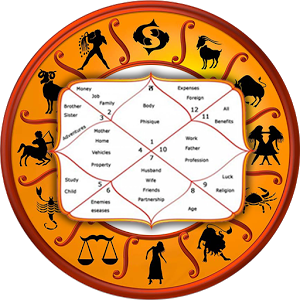
Seemandham is a traditional Hindu ceremony held for a woman during her pregnancy. This is a part of samskaaras that will be held during the 7th or 8th month of pregnancy. This occasion is celebrated for the health and safe delivery of the mother and child.
Seemandham is conducted on an astrologically chosen auspicious day and time (muhurtham).
The alignment of favorable planets and nakshatras ensures the ceremony brings positive energy to the mother and unborn child.
Commonly, benefic planets like Jupiter (Guru) and Venus (Shukra) are considered for their positive influence.


The term punyahavachanam is derived from the sanskrit word punya (means sacred or pure) havachanam (means declaration) during this ritual the priest chants verses from vedas and sprinkle holy water to purify or remove negative energy from the environment
Punyahavachanam is a traditional Vedic ritual performed in Hindu households to purify the environment and individuals, invoking divine blessings and positive energy.
The name Punyahavachanam combines the Sanskrit words Punya (sacred or auspicious) and Havachanam (recitation or declaration).
This ceremony is integral to many Hindu samskaras (life-cycle rituals) and auspicious occasions, including naming ceremonies, weddings, housewarming (Griha Pravesh), and other significant events.
Namakaranam (Naming Ceremony) and Punyahavachanam (Purification Ritual) are intertwined Hindu samskaras that celebrate the formal naming of a newborn child while sanctifying the home and family. These rituals are deeply rooted in Vedic tradition and astrology, marking a new beginning for the child and invoking divine blessings for their well-being and future.


Rudhu Punyahavachanam is a significant Hindu ritual performed to sanctify and celebrate a girl’s age attainment (first menstruation), marking her transition into womanhood. This ceremony, steeped in tradition, spirituality, and cultural significance, purifies the individual and environment, invokes divine blessings, and prepares the young girl for the responsibilities of adulthood.
This event is an engagement ceremony, where the family officially confirm the marriage arrangement between bride and groom. This ritual may include exchanging rings, formal signing of agreements and blessing from elders. This ceremony is seen as a promise or commitment between two families that the wedding will take place and it often includes the presence of close family and friends.
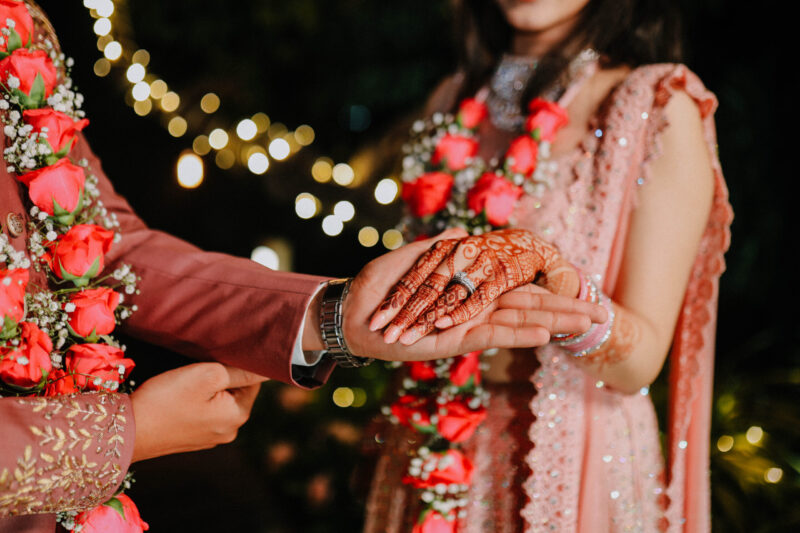

Marriage is legally or culturally recognized union between people, often symbolising a commitment to mutual love, support and partnership. Marriage involves a ceremony, social gathering, legal recognition and often a set of mutual responsibilities for individuals.
The term sashti means 60 and apthapoorthi means completion.This ritual and celebration observed when a person reaches the age of 60 marking completion of 60 years of life. The pupose of this ritual is to celebrate, 60 years as a major milestone in a person's life.
In many cultures, especially in Hindu tradition, reaching the age of 60 is seen as a significant achievement and is celebrated with great reverence. It symbolizes the person's journey through six decades, which is considered a time of wisdom, experience, and spiritual growth.
The ritual usually involves family and community gatherings, prayers, and blessings, with an emphasis on gratitude, reflection, and renewal of life's purpose.


Bhima refers to 70 and radha refers to chariot and shanthi refers to peace. This celebration is celebrated for a long life honoring the couple for the wisdom, experience, spirituality, blessing for continued health, prosperity and dedication to family.
This celebration is a way of recognizing the wisdom, experience, and spirituality that the couple has accumulated over the years. It also symbolizes the blessings for continued health, prosperity, and the couple's dedication to their family.
Vijayaradha Shanthi is a significant and meaningful milestone in the celebration of an elder's life. The term Vijaya refers to victory or success, while Radha means chariot, symbolizing the journey of life, and Shanthi represents peace or serenity. Together, Vijayaradha Shanthi marks a celebration of the elder’s achievements, wisdom, and the victorious completion of their life’s journey so far.
This celebration honors the individual or couple for their accomplishments, the challenges they've overcome, and the experiences they've gained.


The ceremony you are referring to is celebrated when a person reaches the age of 80 or sometimes 81. This significant milestone symbolizes the completion of 1000 full moons, which is a rare and blessed occasion. The completion of 1000 full moons represents a life rich with experiences, wisdom, and a deep connection with time and nature.
This celebration is dedicated to honoring a person's long life, acknowledging the journey they have undertaken, and reflecting on the profound impact they have had on their family and community. It signifies a time of respect, family unity, and spiritual fulfillment. The individual or couple is celebrated for their achievements, the knowledge they have imparted, and the love and guidance they have shared over the years.
The term Ugra means fierce or powerful, signifying the strength, resilience, and determination required to reach an advanced age. Radha refers to a chariot, symbolizing the journey of life, and Shanthi means peace, reflecting the desire for tranquility and serenity in one's later years.
This ritual, often celebrated when a person reaches an advanced stage of life (typically around 80 or more), is conducted to honor the individual for their strength and perseverance in living a long life.


The term Kanaka means gold, symbolizing something precious and rare, while Abhishekam refers to anointing or consecration, a ritual often associated with blessings and sanctification. The Kanaka Abhishekam is a significant ceremony typically performed for a person who has great-grandchildren, marking a long and blessed life that spans multiple generations.
This celebration is not only a recognition of the individual’s longevity and wisdom but also an acknowledgment of their spiritual growth, contributions to the family, and the lasting legacy they have created. Reaching the stage where one has great-grandchildren is seen as a sign of great fortune and fulfillment, as it indicates the continuation of the family lineage and the nurturing of future generations.

In Hindu ritual, Karyam refers to the series of ceremonies and rites performed after a person's death to honor the deceased and support their soul on its journey to the afterlife. These rituals are deeply rooted in the belief in life after death and the soul's journey toward liberation (moksha) or reincarnation.
The primary purpose of Karyam is to ensure the peaceful transition of the soul to the afterlife and to fulfill the last rites of the departed person. These rites are typically carried out by close family members, often under the guidance of priests or spiritual leaders, and can span several days or weeks, depending on the traditions followed.
The ceremony you are referring to is called the "First Year Shraddham" or "Varshika Shraddham". It is performed on the first-year thithi (anniversary) of a person’s death, which marks the completion of one year since their passing. The term Shraddham refers to a ritual performed to honor the deceased, provide spiritual support to their soul, and fulfill the ancestral obligations.

This ceremony is a vital part of Hindu tradition, as it is believed to help the soul of the departed person attain peace and liberation (moksha). It is typically performed by the close family members of the deceased, under the guidance of priests, and it marks a significant moment in the journey of the soul in the afterlife.

The ritual you are referring to is called "Annual Shraddham" or "Tithi Shraddham". It is performed every year on the thithi (lunar date) of an ancestor’s death, following the first-year Shraddham, to honor the deceased and offer prayers for their peace and well-being in the afterlife.
This ceremony is an important annual tradition in Hinduism, as it helps maintain the connection between the living and the departed souls. The ritual is based on the belief that the departed souls require continued offerings and prayers to ensure their peaceful journey toward liberation (moksha), and to remove any obstacles or negative karma that may affect their afterlife.
Ammavasai Tharpanam is a ritual performed on Ammavasai, the new moon day, which holds great significance in Hinduism, particularly for honoring ancestors and seeking blessings for their peace and well-being. Ammavasai refers to the day when the moon is not visible in the sky, a time believed to be particularly auspicious for rituals related to the departed souls.
The Ammavasai Tharpanam is specifically performed to offer gratitude, prayers, and offerings to one's ancestors, and to ensure their peace in the afterlife. The ritual is performed to nourish and support the souls of the ancestors by offering them water and other symbolic items.


Gruhapravesam (from Gruham meaning "home" and Pravesam meaning "entering") is an important and auspicious event in Hindu tradition. It marks the beginning of a new chapter in life when a person or family moves into a new house. This ceremony is typically performed with prayers, rituals, and offerings to seek divine blessings for prosperity, peace, and happiness in the new home.
The Gruhapravesam ceremony is believed to purify the space and bring positive energy into the home. It is a way to ensure that the house is filled with good fortune, harmony, and spiritual protection. The ceremony usually takes place on an auspicious day, chosen based on the Hindu calendar and astrologically favorable timings (muhurtham).

Ganapathy Homam (also known as Ganesha Homa) is a powerful and auspicious Vedic ritual dedicated to Lord Ganesha, the remover of obstacles and the deity of wisdom, prosperity, and success. This homa is performed to invoke Lord Ganesha's blessings, to overcome hurdles, and to bring peace, prosperity, and spiritual growth into one’s life.
Removal of Obstacles: Lord Ganesha is widely revered for his ability to remove obstacles, both material and spiritual. Performing Ganapathy Homam is believed to clear the path of challenges and difficulties in personal and professional endeavors.
Wisdom and Knowledge: Lord Ganesha is also associated with wisdom and intellect. By invoking his blessings through this homa, individuals seek guidance for sound decision-making, mental clarity, and success in their endeavors.
Prosperity and Abundance: Lord Ganesha is also the deity of wealth and prosperity. The homa is performed to invoke his blessings for financial growth, success in business, and overall prosperity in life.

Navagraha Homam is a powerful Vedic ritual dedicated to the Navagrahas, or the nine celestial planets in Hindu astrology, which are believed to significantly influence various aspects of human life. The Navagrahas include:
This homa is performed to seek the blessings of the Navagrahas and to harmonize the planetary influences in one’s life. According to Hindu astrology, each of these planets governs specific aspects of human life, including health, wealth, career, relationships, and spiritual growth. The planets can either have a positive or negative effect, depending on their position in one's astrological chart. The Navagraha Homam is designed to neutralize the malefic effects of these planets and enhance their positive influence.
The Ayush Homa is a Vedic ritual dedicated to Ayur Devata, the god of life and health, whose blessings are sought for the well-being, longevity, and vitality of the individual. The word "Ayush" means "life," and this homa is specifically intended to promote a healthier and longer life by invoking divine blessings for physical and mental health.
Invocation of Ayur Devata: Ayur Devata is believed to be the divine being who governs life and health. By performing the Ayush Homa, individuals seek the blessings of this deity to protect their lives from illness and misfortune, and to enhance vitality, energy, and overall well-being.

Health and Longevity: The primary purpose of the Ayush Homa is to ensure a long and healthy life. The homa is designed to remove health obstacles, enhance immunity, and promote longevity by aligning the individual with divine blessings for physical and spiritual well-being.

The Suyamvara Homa is a Vedic ritual dedicated to Goddess Parvathi, the wife of Lord Shiva. The term "Suyamvara" refers to the ancient practice where a person chooses their own life partner, traditionally seen as an event where a bride, in the presence of suitors, selects her partner, symbolizing free will and the union of two souls. In the context of the Suyamvara Homa, the ritual is performed to seek divine blessings from Goddess Parvathi, with the intention of finding the right life partner and ensuring marriage at an auspicious time.
Goddess Parvathi's Blessings: Goddess Parvathi is considered the epitome of love, devotion, and marital harmony. By performing the Suyamvara Homa, individuals seek her divine blessings for a harmonious and prosperous marriage, ensuring that they find a suitable life partner.
Right Time for Marriage: This homa is believed to help individuals find the right partner at the right time. In Hindu tradition, the timing of marriage is crucial, and this homa is performed to align one's destiny with divine grace, ensuring that marriage takes place when it is astrologically and spiritually favorable.
Removal of Obstacles in Marriage: The Suyamvara Homa is also performed to remove any obstacles or delays in finding a life partner. It is believed to clear negative energies or any astrological doshas (flaws) that might hinder marriage.
The Mrityunjaya Homa is a powerful and sacred Vedic ritual dedicated to Lord Shiva, particularly to the form known as Mrityunjaya (the "Conqueror of Death"). This homa is performed to invoke Lord Shiva's blessings for health, longevity, protection from untimely death, and relief from chronic diseases. The Mrityunjaya Homa is considered one of the most auspicious and important rituals in Hinduism, known for its transformative and protective effects.
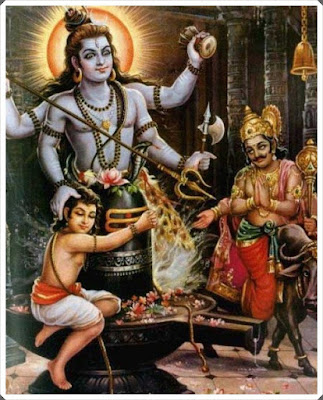
Lord Shiva as Mrityunjaya: Lord Shiva, in his Mrityunjaya form, is revered as the god who has the power to overcome death, destroy negative energies, and grant immortality or prolonged life. This form of Lord Shiva is invoked to help individuals ward off untimely death and extend their lifespan.
Health and Longevity: The Mrityunjaya Homa is believed to have a powerful impact on the health of the individual. By invoking Lord Shiva’s blessings, it is said that this homa can help improve physical health, protect against illness, and ensure a longer, healthier life.
Protection from Untimely Death: One of the main reasons for performing the Mrityunjaya Homa is to seek protection from premature death or accidents. Lord Shiva, as Mrityunjaya, is considered the ultimate protector against death and the destroyer of ailments, particularly fatal ones.
Relief from Chronic Diseases: The Mrityunjaya Homa is often performed by those suffering from chronic diseases or health conditions that seem difficult to cure. The ritual is believed to provide spiritual and divine healing, helping the individual find relief from long-term ailments.

The Vaak Devatha Homa is a sacred Vedic ritual dedicated to Goddess Saraswati, the goddess of speech, wisdom, learning, and creativity. The term "Vaak" means words, and "Devatha" means deity, signifying that this homa is specifically performed to invoke the divine blessings of the goddess who governs speech, knowledge, and intellectual abilities.
Goddess Saraswati’s Blessings: Goddess Saraswati is revered as the embodiment of wisdom, learning, arts, music, and speech. By performing the Vaak Devatha Homa, devotees seek her divine blessings to improve their intellectual faculties, learning abilities, and communication skills.
Enhancement of Memory and Learning: This homa is particularly beneficial for students, professionals, and anyone seeking to enhance their ability to learn, absorb information, and recall knowledge. Goddess Saraswati’s grace is believed to sharpen the mind, improve memory, and help with academic success.
Improved Clarity in Speech: As the goddess of speech, performing the Vaak Devatha Homa is believed to help improve clarity, fluency, and articulation in communication. It is especially beneficial for those who engage in public speaking, teaching, or any profession that requires effective verbal communication.
Intellectual Growth and Creativity: The homa is also believed to foster intellectual growth, boost creativity, and inspire innovative thinking. It encourages the development of new ideas, problem-solving abilities, and artistic talents, making it beneficial for students, artists, writers, and professionals involved in creative fields.

The term 'Nakshatra' means star, as per astrology there are 27 nakshatras. These nakshatras are considered powerful celestial entity and each one governs various aspects of human life like health, fortune, spiritual progress and relationships. By performing this homa devotees aim to hormonise their energy with nakshatras, remove obstacles and improve their destiny based on their astrological chart.
By performing the Nakshatra Homa, devotees seek to harmonize their energies with the energies of these celestial bodies, align their spiritual and material paths, and remove obstacles that may be impeding their personal or spiritual growth. The homa helps improve one's destiny by addressing influences indicated in their astrological chart and invoking the blessings of the Nakshatras to promote overall well-being and prosperity.
The Danvanthri Homa is a powerful Vedic ritual dedicated to Lord Danvanthri, who is regarded as the god of medicine and one of the incarnations of Lord Vishnu. Lord Danvanthri is believed to have emerged from the ocean of milk (Ksheera Sagar) during the churning of the ocean (Samudra Manthan) with the elixir of immortality and divine medicinal knowledge. He is revered as the patron deity of health, healing, and well-being.
Lord Danvanthri’s Divine Role: Lord Danvanthri is known as the healer and preserver of life. He is believed to possess divine knowledge of herbs, medicines, and healing methods that cure both physical and mental ailments. He is revered in Hinduism as the embodiment of health and wellness.

Healing and Recovery: Performing the Danvanthri Homa is said to invoke Lord Danvanthri's blessings for recovery from illness, both physical and mental. It is especially powerful for those seeking to overcome chronic diseases, accidents, or ailments that have been persistent or difficult to cure. The homa is believed to provide divine protection against health-related issues.
Physical and Mental Well-being: This homa is not only beneficial for those suffering from specific illnesses but also for those who wish to maintain their overall health and mental well-being. Lord Danvanthri’s blessings are said to help restore balance and energy, promoting both physical vitality and mental peace.
Spiritual and Therapeutic Support: The homa serves as both a therapeutic and spiritual practice, invoking divine healing forces to alleviate suffering and offer support for better health. The ritual is especially auspicious for those who have health concerns or wish to enhance their wellness and vitality.
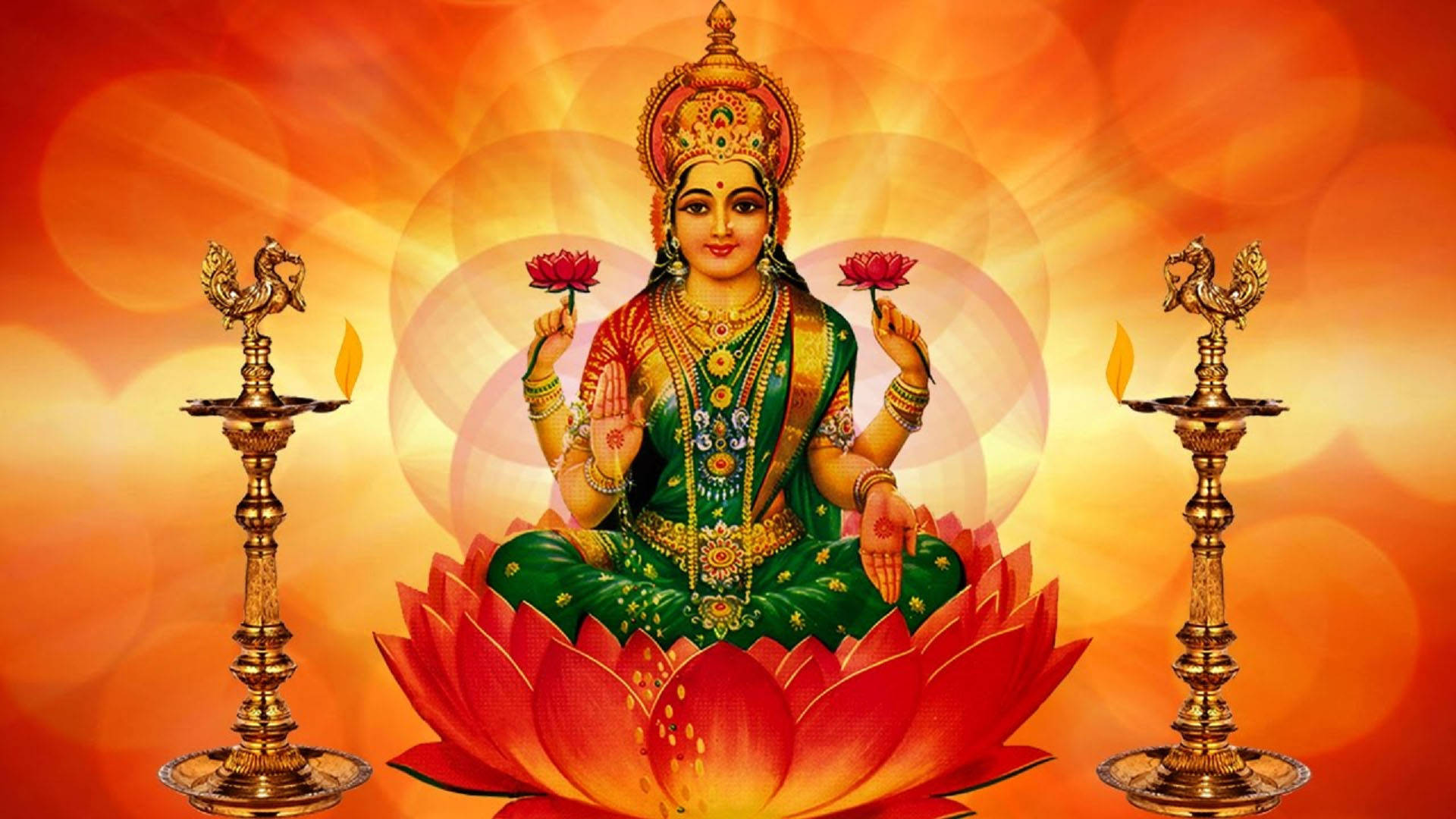
The Lakshmi Homa is a powerful Vedic ritual dedicated to Goddess Lakshmi, the Hindu goddess of wealth, prosperity, abundance, fertility, and fortune. She is one of the most widely worshiped deities in Hinduism and is known to bring blessings of material and spiritual well-being to her devotees.
Goddess Lakshmi’s Blessings: Goddess Lakshmi is the embodiment of wealth, prosperity, and abundance. Worshipping her and seeking her blessings through the Lakshmi Homa is believed to invite financial prosperity, peace, and overall success in one’s life. She is also associated with spiritual growth and inner peace.
Wealth and Material Prosperity: The primary purpose of performing the Lakshmi Homa is to invoke Goddess Lakshmi’s blessings for financial stability, material success, and prosperity. The ritual is believed to bring good fortune, remove obstacles to wealth, and ensure a continuous flow of resources and opportunities.
Health and Well-being: Besides wealth, Goddess Lakshmi is also associated with health, prosperity of the family, and overall well-being. By performing this homa, individuals seek to improve not just their financial conditions but also their physical health and mental peace.
Success and Growth: Performing the Lakshmi Homa is also believed to lead to success in business, career, and education, bringing opportunities for growth and advancement in various aspects of life. It is especially beneficial for those starting new ventures, seeking job promotions, or wanting to enhance their professional life.
Removal of Financial Obstacles: The homa is often performed when an individual is facing financial difficulties or struggling with debt. By invoking Goddess Lakshmi’s blessings, it is believed that negative energies and obstacles related to financial issues are cleared away, paving the way for wealth and abundance.
The Kubera Lakshmi Homa is a powerful and auspicious Vedic ritual dedicated to invoking the blessings of Lord Kubera (the god and guardian of earthly treasures) and Goddess Lakshmi (the goddess of wealth and prosperity). Both of these deities are revered in Hinduism for their ability to bring material wealth, financial stability, and overall success in life. This homa is performed to attract wealth, improve financial growth, and ensure the success of financial ventures.
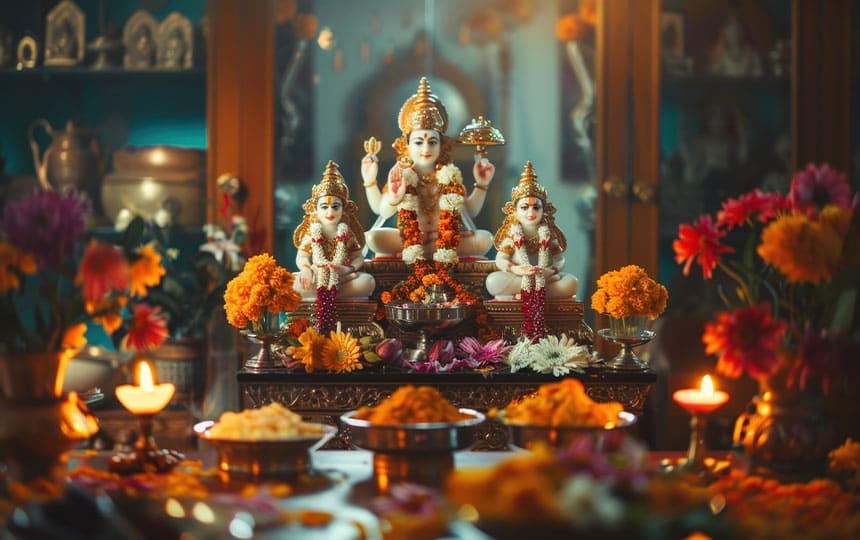
Lord Kubera: Kubera is considered the treasure god and the keeper of all material wealth. He is the deity who guards the wealth of the world, making him a key figure in the pursuit of financial prosperity. Kubera’s blessings are believed to remove financial obstacles and help create a steady flow of wealth, business success, and opportunities for growth.
Goddess Lakshmi: Goddess Lakshmi is the goddess of prosperity, wealth, and abundance. She is associated not only with material wealth but also with spiritual prosperity and good fortune. Her blessings are sought to improve financial standing, bring success in business, and ensure overall well-being and stability.
The Power of Combined Blessings: The combination of Kubera and Lakshmi is believed to be extraordinarily powerful for attracting both material and spiritual abundance. While Kubera governs wealth, ensuring its stability and growth, Lakshmi is the source of the prosperity that enhances all aspects of life. By invoking both deities in a homa, devotees seek to attract complete financial abundance—with financial stability, growth, and a prosperous future.
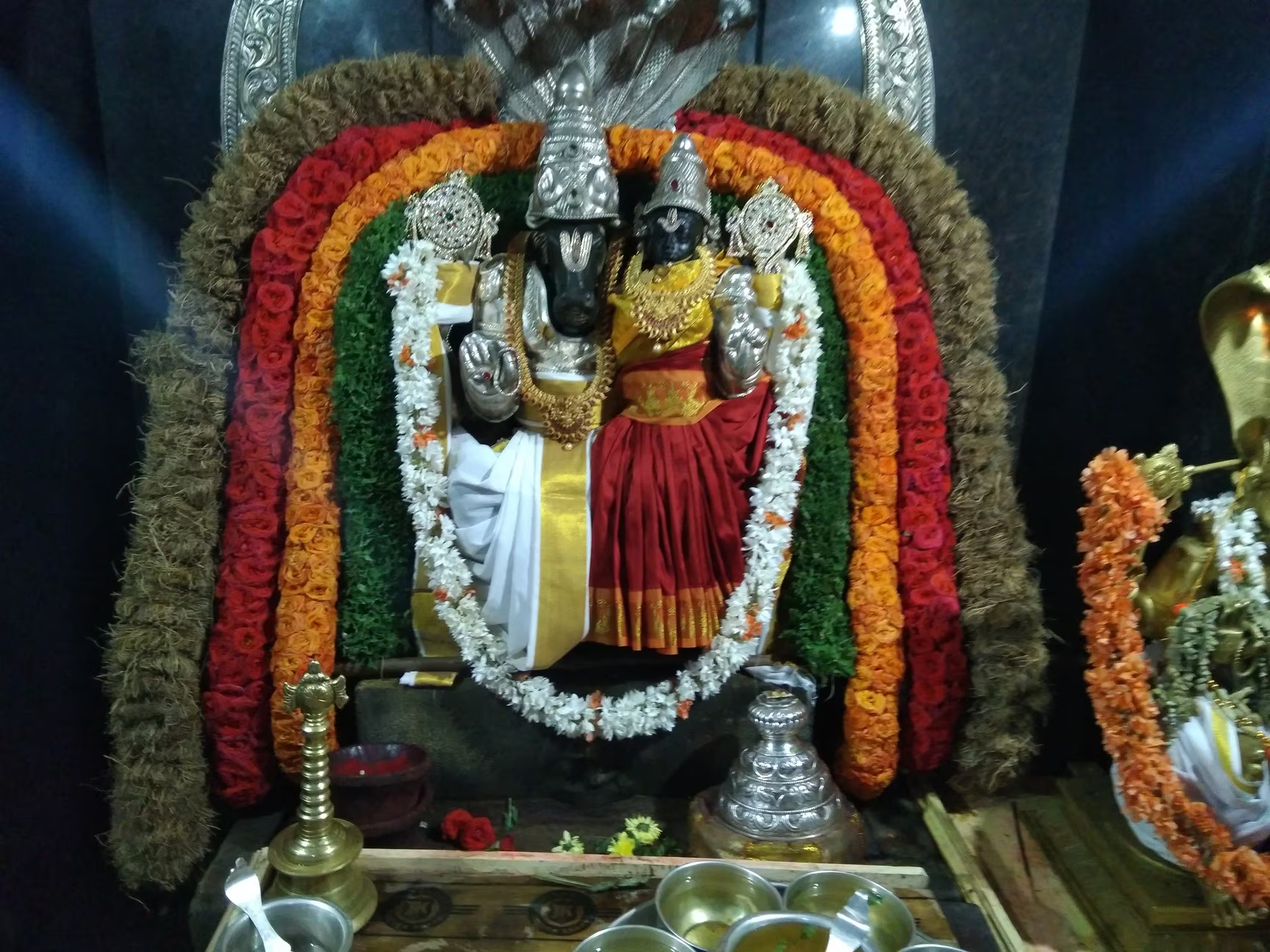
The Lakshmi Hayagreeva Homa is a powerful and auspicious Vedic ritual that combines the blessings of Goddess Lakshmi (the goddess of wealth and prosperity) and Lord Hayagreeva (the god of knowledge, wisdom, and intellect). This unique homa is performed to enhance both material wealth and intellectual growth. By invoking the blessings of both deities, it is believed to bring success in financial ventures, improve academic performance, and elevate overall knowledge and wisdom.
Goddess Lakshmi: Goddess Lakshmi is the embodiment of wealth, prosperity, and abundance.
Worshipping Lakshmi brings financial stability, success, and material prosperity. She is also associated with good fortune, harmony in the home, and overall well-being. By performing this homa, devotees seek her blessings for financial growth and success in business ventures.
Lord Hayagreeva: Lord Hayagreeva is a unique incarnation of Lord Vishnu, depicted with the head of a horse, and is considered the god of knowledge, wisdom, and intellect. He is the deity who provides clarity of thought, improves memory, and boosts intellectual abilities. Worshipping Lord Hayagreeva is believed to enhance one’s academic success, learning capabilities, and mental clarity. He is also known for imparting knowledge in fields like spiritual wisdom, science, and arts.
The Combination of Wealth and Knowledge: This homa combines the blessings of both Lakshmi and Hayagreeva, creating a powerful synergy that fosters growth in both material wealth and intellectual prowess. While Lakshmi ensures the prosperity and financial success, Hayagreeva helps in the development of wisdom, knowledge, and academic achievements. This combination can benefit those who wish to improve their business ventures, academic performance, and overall financial and intellectual growth.
For Academic Success: This homa is ideal for students, scholars, and individuals seeking success in academics, exams, and intellectual pursuits. Whether preparing for important exams, seeking to improve their knowledge base, or desiring to excel in their field of study, performing this homa helps enhance memory, concentration, and intellectual capacity.
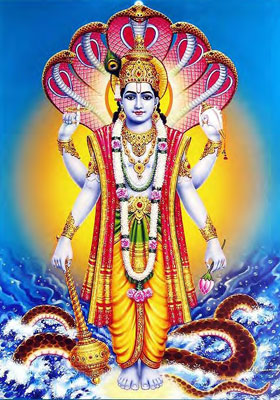
The Purusha Homa is a profound and powerful Vedic ritual dedicated to the worship of Purusha, the supreme cosmic being in Hindu philosophy. Purusha is often described as the universal spirit or divine consciousness that pervades all of creation, and is considered the essence of both the physical and spiritual realms. The Purusha Homa is performed to align oneself with the divine cosmic energy and invoke blessings for prosperity, peace, and spiritual enlightenment.
Purusha (Supreme Cosmic Being): In Hinduism, Purusha represents the eternal, infinite, and unchanging consciousness that transcends time, space, and the material world. Purusha is said to be the source of all creation, embodying the cosmic order and divine energy that sustains the universe. The worship of Purusha is a way to connect with the ultimate reality and align one's individual consciousness with the cosmic consciousness.
Cosmic Energy and Spiritual Alignment: The Purusha Homa is a powerful means to attune oneself to the divine cosmic energy that permeates the universe. By invoking Purusha, individuals seek to align their lives with the divine order, transcending the limitations of the material world and gaining access to higher spiritual realms. It helps in experiencing spiritual unity and achieving inner peace and enlightenment.
Blessings for Prosperity, Peace, and Enlightenment: The Purusha Homa invites divine blessings for material prosperity, peace of mind, and spiritual growth. It is believed that performing this homa can bring harmony and abundance into one's life while fostering a deeper connection with the higher self and the divine.
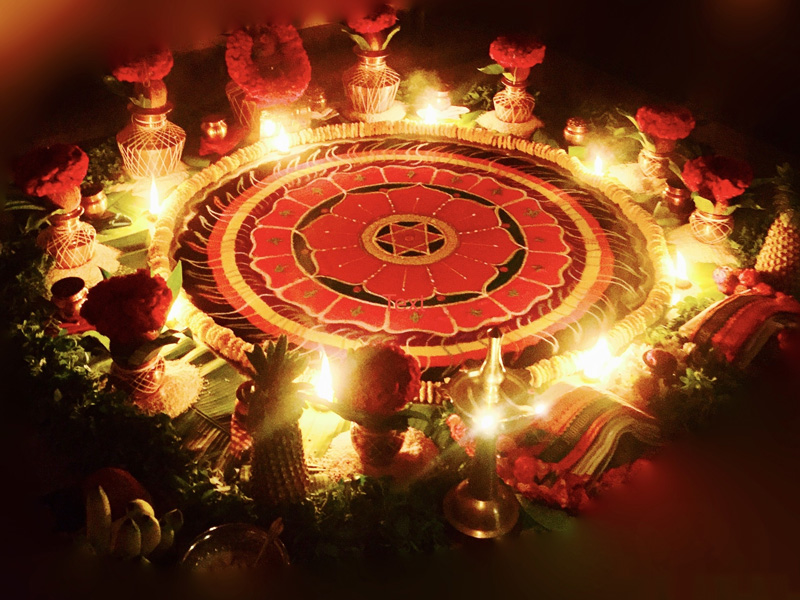
The Sudarshana Chakra Homa is a powerful Vedic ritual dedicated to Lord Sudarshana, the divine weapon of Lord Vishnu, which is depicted as a spinning disc-like weapon, often called the Chakra. It is considered one of the most auspicious and potent rituals for protection, purification, and the removal of obstacles in life. The Sudarshana Chakra is believed to embody divine power, knowledge, and the destruction of evil. Performing this homa invokes the blessings of Lord Sudarshana, ensuring that the devotee is shielded from negative forces, troubles, and hardships.
Lord Sudarshana is a celestial weapon of Lord Vishnu, symbolizing divine protection and the destruction of evil forces. It is said to be capable of destroying negative energies, obstacles, and demonic forces that hinder the progress of an individual.
The Sudarshana Chakra is often described as a disc with thousands of blades that spin at immense speed, cutting through all forms of darkness, ignorance, and malefic influences in the universe. It is considered the protector of the cosmos and is believed to grant victory over all adversities.
Protection and PurificationThe Sudarshana Chakra Homa is performed primarily for protection from negative energies, evil forces, and harmful influences. It is believed to create a protective shield around the devotee, ensuring safety, security, and mental peace.
This homa purifies the surroundings and the individual, eliminating negative vibrations, obstacles, and evil influences from one’s life, and inviting positive energy and divine blessings.
Removal of ObstaclesThe Sudarshana Chakra is known for its ability to remove obstacles that impede success and prosperity. Whether it's in the realm of career, health, relationships, or spiritual growth, this homa is believed to eliminate difficulties, paving the way for progress and victory.
It is commonly performed when an individual faces repeated setbacks, hardships, or when they are trying to overcome major life challenges, to seek divine intervention and ease their struggles.
The Narasimha Lakshmi Homa is a powerful and auspicious ritual that combines the divine blessings of Lord Narasimha (an incarnation of Lord Vishnu) and Goddess Lakshmi (the goddess of wealth and prosperity). This homa is specifically designed to invoke divine protection, remove obstacles, and bring courage, wealth, prosperity, and overall well-being into one's life.

Lord Narasimha:
Lord Narasimha is one of the most powerful incarnations of Lord Vishnu. He is depicted as a half-man, half-lion form, symbolizing immense strength and power. Narasimha is considered the protector who saves devotees from evil forces and demonic influences.
As the divine protector, Narasimha is known for his ability to destroy negative energies, eliminate obstacles, and defend against all evil forces, providing courage and strength to those who invoke his blessings.
Goddess Lakshmi:
Goddess Lakshmi is the goddess of wealth, prosperity, abundance, and good fortune. She is also known as the bestower of material and spiritual wealth, and her blessings bring success, harmony, and stability in both personal and professional life.
Worshipping Goddess Lakshmi is believed to improve one’s financial status, prosperity, and overall well-being, making her blessings integral to achieving lasting success and peace.
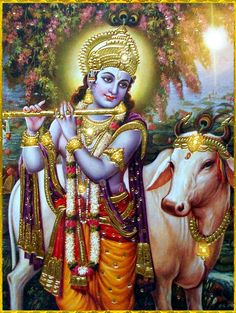
The Santhanagopala Homa is a sacred ritual performed to invoke the blessings of Lord Krishna in his form as Santhanagopala, which is his divine incarnation as a child. The primary purpose of this homa is to bless couples who desire parenthood. Lord Krishna, in his form as Santhanagopala, is believed to bestow fertility, health, and divine blessings for conceiving a child.
The term Santhana means offspring or progeny, and Gopala refers to Lord Krishna as the protector of cows (a metaphorical reference to his care for all beings). As Santhanagopala, Lord Krishna is worshipped as the deity who blesses couples with children.
Lord Krishna in this form is revered as a child-giver, and his divine blessings help couples who are struggling with infertility or wish to be blessed with children.
By performing the Santhanagopala Homa, couples invoke the grace of Lord Krishna, asking for his divine intervention to grant them the blessing of parenthood. It is believed that through this ritual, Lord Krishna provides the blessing of a child, ensuring a healthy pregnancy and a safe birth.
The homa is especially important for those seeking divine support when facing challenges in conceiving, as well as for couples who desire a harmonious and prosperous family life.
This homa is primarily performed with the intention to receive Lord Krishna’s blessings for fertility and offspring. Couples who are unable to conceive naturally can perform this homa to remove any obstacles to pregnancy and invite divine grace for a healthy child.
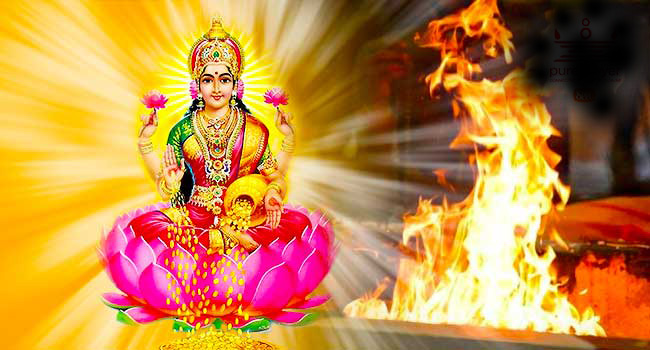
The Lakshmi Homa is a sacred Vedic ritual dedicated to Goddess Lakshmi, the goddess of wealth, prosperity, and abundance. Performing this homa is believed to invoke her divine blessings, leading to the flourishing of wealth, success, happiness, and overall well-being in the devotee's life.
Goddess Lakshmi:
Goddess Lakshmi is one of the most revered deities in Hinduism, symbolizing wealth, prosperity, good fortune, and abundance. She is the divine consort of Lord Vishnu and is often depicted as a graceful and benevolent figure holding lotus flowers, which represent purity and beauty.
Lakshmi is believed to be the provider of material and spiritual wealth, and her blessings are essential for achieving success in both worldly pursuits and spiritual growth.
Wealth and Prosperity:
Goddess Lakshmi is primarily worshipped to seek financial stability, success, and material prosperity. She is believed to bring prosperity not just in terms of money, but also in terms of health, career success, and overall well-being.
Abundance in Life:
Performing this homa helps devotees experience the abundance of life, ensuring that they are blessed with wealth, good health, harmony, and joy. Goddess Lakshmi's blessings help in improving various aspects of one's life, from personal relationships to professional success.
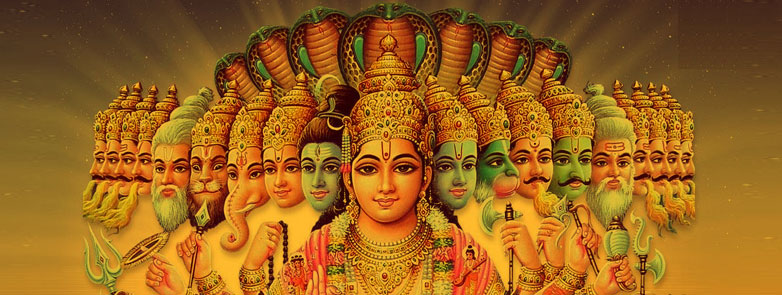
The Sathyanarayana Pooja is a sacred ritual dedicated to Lord Vishnu in his form as Sathyanarayana, the deity who embodies truth (Satya) and prosperity. This pooja is typically performed on Pournami (the full moon day) to seek the blessings of Lord Vishnu for prosperity, peace, well-being, and spiritual growth.
Lord Vishnu as SathyanarayanaIn his form as Sathyanarayana, Lord Vishnu represents truth (Satya) and righteousness. "Sathya" means truth or honesty, and "Narayana" refers to Lord Vishnu, the preserver of the universe. This form of Vishnu is believed to bless devotees with truthfulness, prosperity, peace, and spiritual fulfillment.
The Sathyanarayana Pooja is especially effective in removing obstacles, providing material and spiritual abundance, and helping individuals fulfill their desires in a truthful and righteous manner.
Performed on Full Moon Day (Pournami)The pooja is traditionally performed on Pournami, or full moon day, a time when the moon is at its peak brightness and energy. The full moon is considered a highly auspicious time in Hinduism, bringing clarity, divine light, and spiritual energy.
Performing the Sathyanarayana Pooja on this day is believed to enhance the effects of the pooja, promoting blessings for both material success and spiritual progress.
Vilakku Pooja is a beautiful and symbolic ritual in Hindu tradition, where a lamp (Vilakku) is offered to the deity as a form of worship (Pooja). The word "Vilakku" means lamp, and "Pooja" refers to the ritualistic worship of the deity. This ritual highlights the importance of light both spiritually and mentally, signifying divine presence, purification, and guidance.
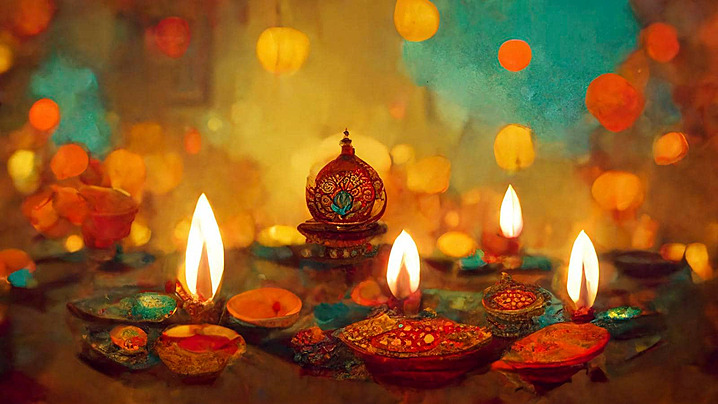
Light (Vilakku) in Hinduism is considered a symbol of knowledge, wisdom, and purity. Just as light dispels darkness, the Vilakku Pooja symbolizes the removal of ignorance and the illuminating presence of divine grace in the life of the devotee.
Light is also associated with divine consciousness. The lamp represents the flame of knowledge and truth, which is believed to guide one’s journey toward spiritual enlightenment and mental clarity.
Spiritual and Mental IlluminationPerforming the Vilakku Pooja is a way to seek spiritual illumination. The light of the lamp represents the divine light of God that dispels ignorance and shows the way to truth and righteousness.
This ritual is also a way to seek mental peace and clarity in life. It helps remove confusion and darkness in one’s thoughts, guiding the individual toward wisdom and inner calm.
Purification and PositivityLighting the lamp during this pooja is a form of purification. The flame is believed to purify the surroundings, creating an atmosphere filled with positive energy and divine vibrations. It is thought to remove negative influences and invite divine blessings into the home and life.
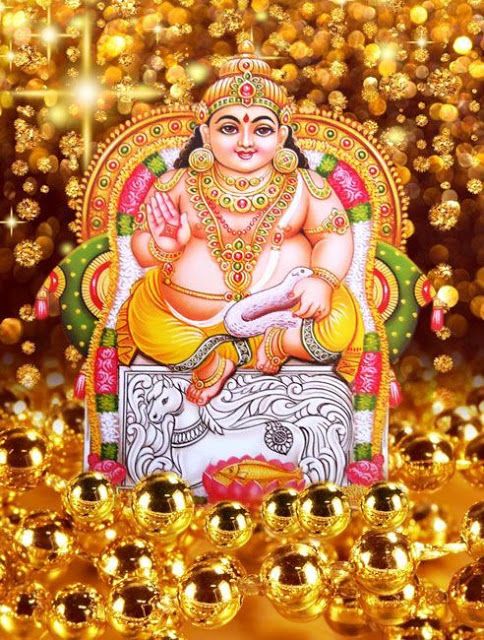
The Kubera Pooja is a sacred ritual dedicated to Lord Kubera, the god of wealth, prosperity, and the guardian of treasures in Hindu mythology. Lord Kubera is considered the treasure keeper and the lord of material abundance, and this pooja is performed to seek his divine blessings for financial growth, success in business, and overall prosperity.
Kubera – The God of WealthLord Kubera is revered as the custodian of wealth and the king of the Yakshas. He governs all material riches and is responsible for distributing wealth in the world. His blessings are believed to bring financial stability, success, and abundance to his devotees.
Kubera is also associated with prosperity, good fortune, and material success, making him an important deity in rituals related to wealth and prosperity.
The Kubera Pooja is performed to invoke his divine blessings for the growth of financial resources, success in business, and elimination of obstacles that hinder the flow of wealth.
Kubera is known to bless his devotees with material well-being, luxury, and prosperity, while also ensuring that wealth is acquired through righteous means.

Lord Ayyappan is a highly revered deity in Hinduism, known as the son of Lord Shiva and Mohini, the female incarnation of Lord Vishnu. He is widely worshipped for his qualities of strength, courage, discipline, and protection. Lord Ayyappan is considered the deity who protects his devotees and helps them overcome life's obstacles, particularly related to health, prosperity, and spiritual progress.
The chant "Swamiye Saranam Ayyappa" is a central invocation in the worship of Lord Ayyappan, particularly during the Ayyappa Pooja. This powerful mantra symbolizes complete surrender to the divine, seeking Lord Ayyappan’s protection, guidance, and blessings.

The Danvanthri Pooja is a sacred Hindu ritual dedicated to Lord Danvanthri, who is revered as the god of medicine and health. Lord Danvanthri is an incarnation of Lord Vishnu and is regarded as the divine physician who possesses the knowledge of medicine, healing, and the restoration of well-being. He is believed to have emerged during the churning of the ocean (Samudra Manthan), holding the elixir of life and healing herbs to cure ailments and bestow immortality.
This pooja is performed by devotees who seek blessings for health, recovery from illness, and the maintenance of physical and mental well-being.
Lord Danvanthri is considered the deity of health and medicine. According to Hindu mythology, he is believed to have brought the knowledge of Ayurveda (the ancient system of healing) and various remedies to humankind. Worshiping Lord Danvanthri is thought to bring health, cure diseases, and protect individuals from ailments.
Lalitha Parameshwari is one of the most revered and powerful forms of the Divine Feminine in Hinduism, representing the ultimate cosmic power. She is a combination of the three supreme goddesses: Durga, Lakshmi, and Saraswati, and she is believed to embody the perfect balance of strength, wealth, and wisdom.
The Lalitha Sahasranama (1008 Names of Goddess Lalitha) is a revered sacred text consisting of the 1008 names of Goddess Lalitha, and it is one of the most important hymns in Hindu spirituality. Chanting or performing the pooja associated with the Lalitha Sahasranama is said to invoke divine blessings for spiritual liberation, health, wealth, and prosperity.
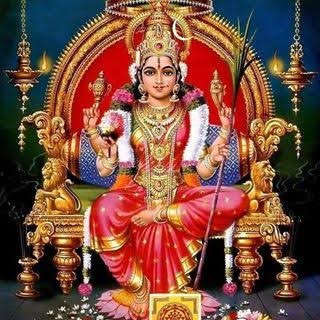
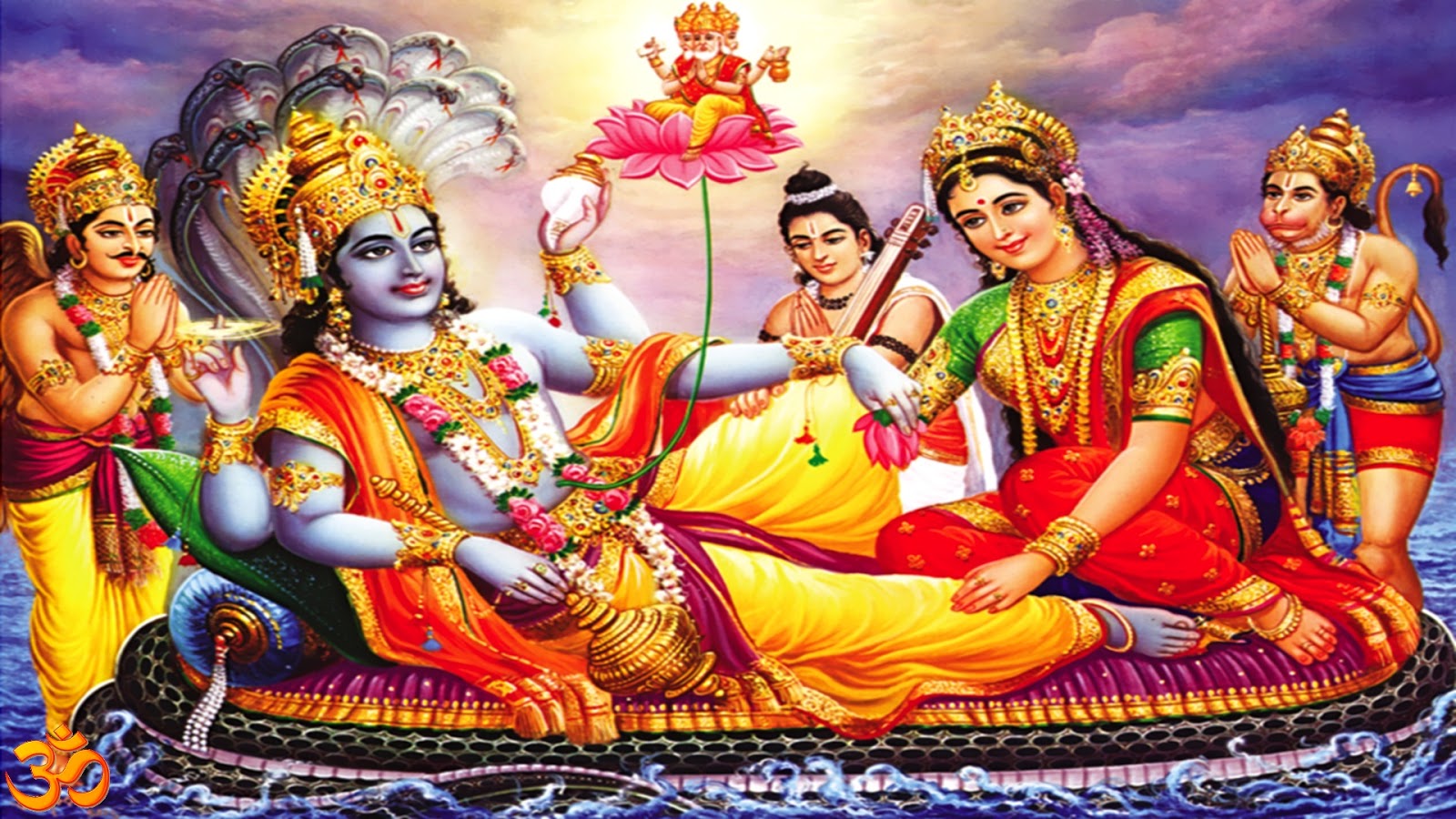
The Vishnu Sahasranama is a revered and sacred scripture found in the Mahabharata, one of the ancient and revered texts in Hinduism. It consists of 1008 names of Lord Vishnu, each representing a different divine attribute, quality, or form of the Supreme Being. Chanting or performing a pooja based on the Vishnu Sahasranama is a powerful spiritual practice that invokes the divine blessings of Lord Vishnu for protection, prosperity, spiritual upliftment, and overall well-being.

The Lakshmi Pooja is a sacred and powerful ritual dedicated to Goddess Lakshmi, the goddess of wealth, prosperity, fortune, and abundance in Hinduism. This pooja is performed to invite the blessings of Goddess Lakshmi for improving financial stability, material prosperity, success, and overall well-being.

Ganapathy Pooja is a highly revered and powerful ritual dedicated to Lord Ganesha, the remover of obstacles, god of wisdom, and lord of prosperity in Hinduism. The pooja is known for its significant impact in helping individuals overcome challenges, gain wisdom, and invite peace and prosperity into their lives. It is a widely performed ritual during the festival of Vinayaka Chaturthi.

Subramanya pooja is also known as karthika pooja, it is performed to worship Lord Subramanya, he is widely referred as god of war, the protector of devotees and remover of obstacles.
Lord Ganesha: Lord Ganesha, depicted with an elephant head, is widely worshipped as the remover of obstacles and the god of beginnings. He is believed to help devotees overcome difficulties and challenges, whether they are personal, professional, or spiritual. He is also associated with wisdom, intellect, and learning, making him a favored deity for students and those seeking intellectual growth.

Gowri Pooja, also known as Gowri Habba or Gowri Vratam, is a sacred ritual dedicated to Goddess Gowri, who is the manifestation of Goddess Parvati, the consort of Lord Shiva. Goddess Gowri is revered as a symbol of fertility, prosperity, health, and family well-being. This pooja is performed primarily by married women, especially to enhance their family’s happiness, well-being, and to seek blessings for a healthy life and prosperous future.
Goddess Gowri: Goddess Gowri, also called Goddess Parvati, represents divine feminine energy. She is the embodiment of fertility, grace, and nurturing qualities and is believed to bring peace, harmony, and prosperity to the family. Goddess Parvati is also known as the mother of Lord Ganesha and Lord Kartikeya, and her blessings are sought for family happiness, health, and fertility.

An astrology career involves the study and practice of astrology, a discipline that examines the positions and movements of celestial bodies (such as planets, stars, and the moon) and their influence on human life and events. Astrologers use various techniques, including horoscopes, birth charts, and planetary transits, to provide insights and guidance on various aspects of life, including personal relationships, career, health, and spiritual growth.
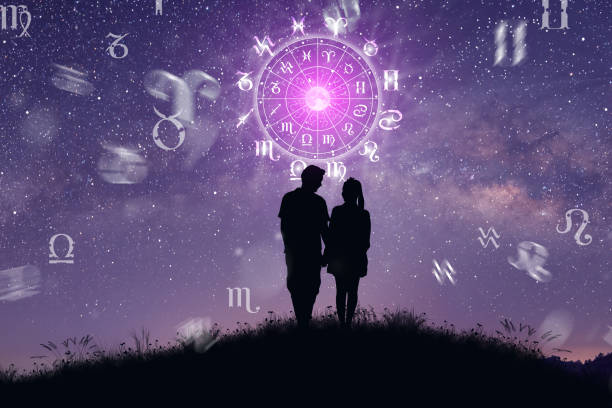
Relationship Astrology is a branch of astrology that focuses on understanding the dynamics between two individuals based on their astrological charts. It involves analyzing the positions of planets, their aspects, and how they interact with each other's natal charts to gain insights into compatibility, strengths, challenges, and potential growth areas within a relationship. Relationship astrology is often used to understand romantic partnerships, but it can also be applied to friendships, family connections, and professional relationships.
Finance Astrology is a branch of astrology that focuses on the influence of celestial bodies, planetary movements, and astrological charts on an individual’s financial life. It aims to provide insights into a person’s financial prospects, career path, wealth accumulation, and challenges. By analyzing specific aspects of a person’s astrological chart, financial astrology offers predictions and advice on how to handle money matters, investment opportunities, business decisions, and financial growth.


Astrology for Business is a specialized branch of astrology that focuses on how celestial bodies influence business ventures, entrepreneurship, career decisions, and overall success in the professional world. By analyzing an individual’s natal chart, planetary placements, and astrological transits, astrologers can provide insights and guidance on the most favorable times to start or expand a business, the best industries for success, and potential obstacles to avoid.
Astrology for Education is a specialized branch of astrology that provides insights into a person’s learning abilities, academic interests, and potential success in educational pursuits. It is based on the premise that the positions of celestial bodies at the time of one's birth influence intellectual abilities, memory, concentration, and the overall approach to learning. By analyzing a person's natal chart, astrologers can offer guidance on the best fields of study, educational path, and the most favorable times to take exams or pursue higher education.


Astrology for Health is a branch of Vedic astrology that seeks to understand and address an individual’s physical and mental health based on the positions of planets and celestial bodies at the time of their birth. It uses the natal chart (birth chart) to analyze potential health challenges, predispositions, and the overall well-being of a person, with the goal of providing remedies and preventive measures for health issues. In this system, certain houses, planets, and signs are particularly associated with different aspects of health.

Astrology for Health is a branch of Vedic astrology that seeks to understand and address an individual’s physical and mental health based on the positions of planets and celestial bodies at the time of their birth. It uses the natal chart (birth chart) to analyze potential health challenges, predispositions, and the overall well-being of a person, with the goal of providing remedies and preventive measures for health issues. In this system, certain houses, planets, and signs are particularly associated with different aspects of health.



